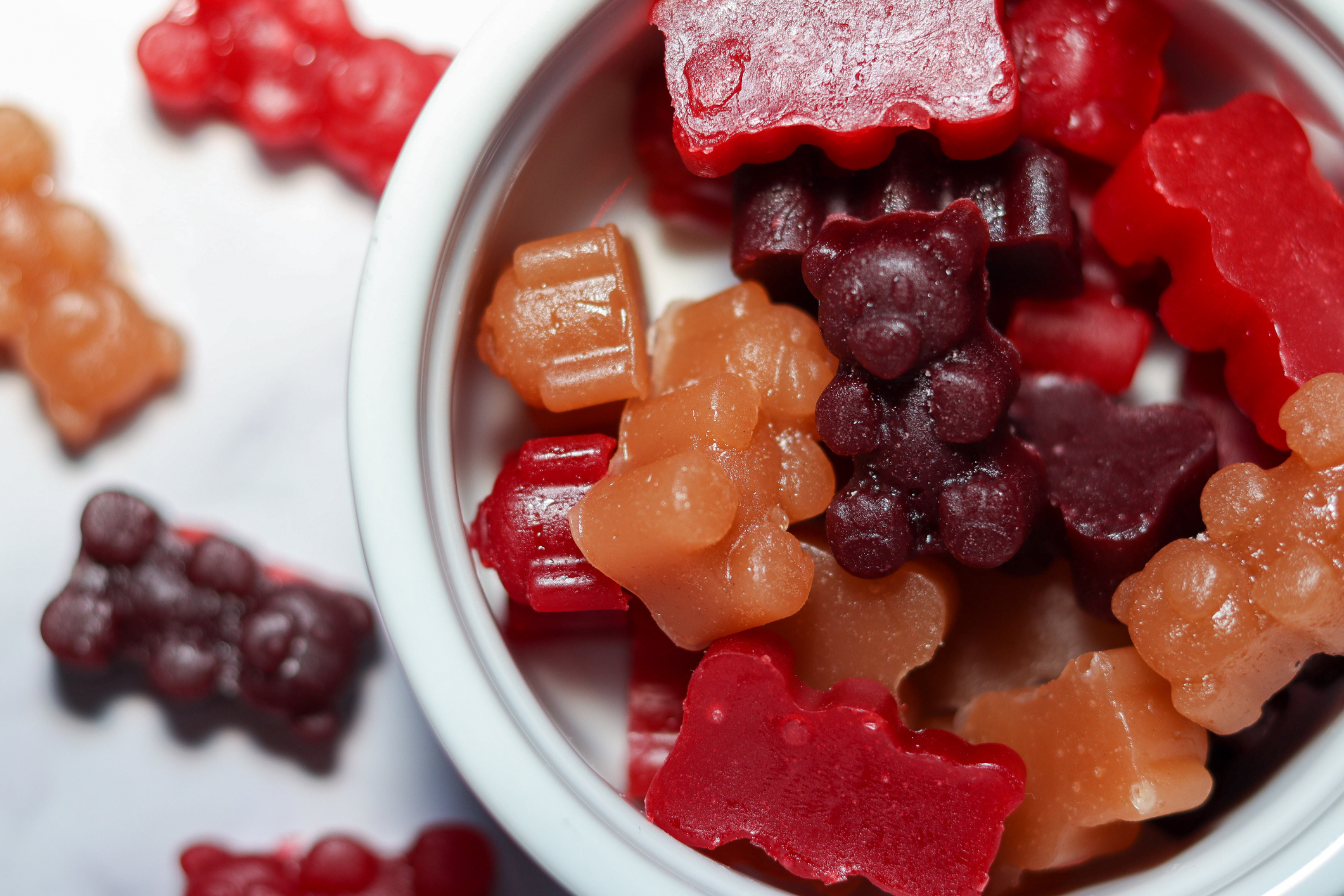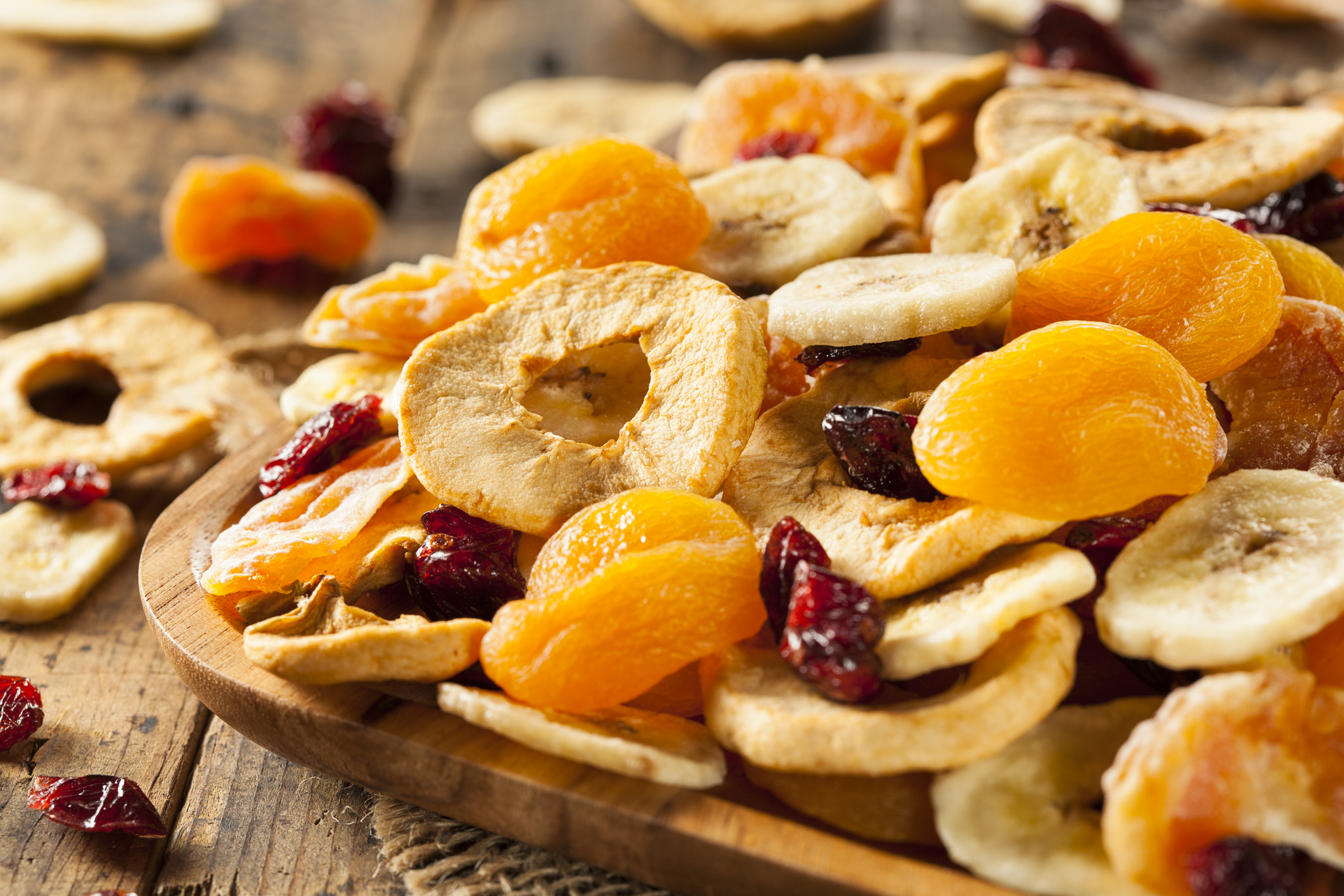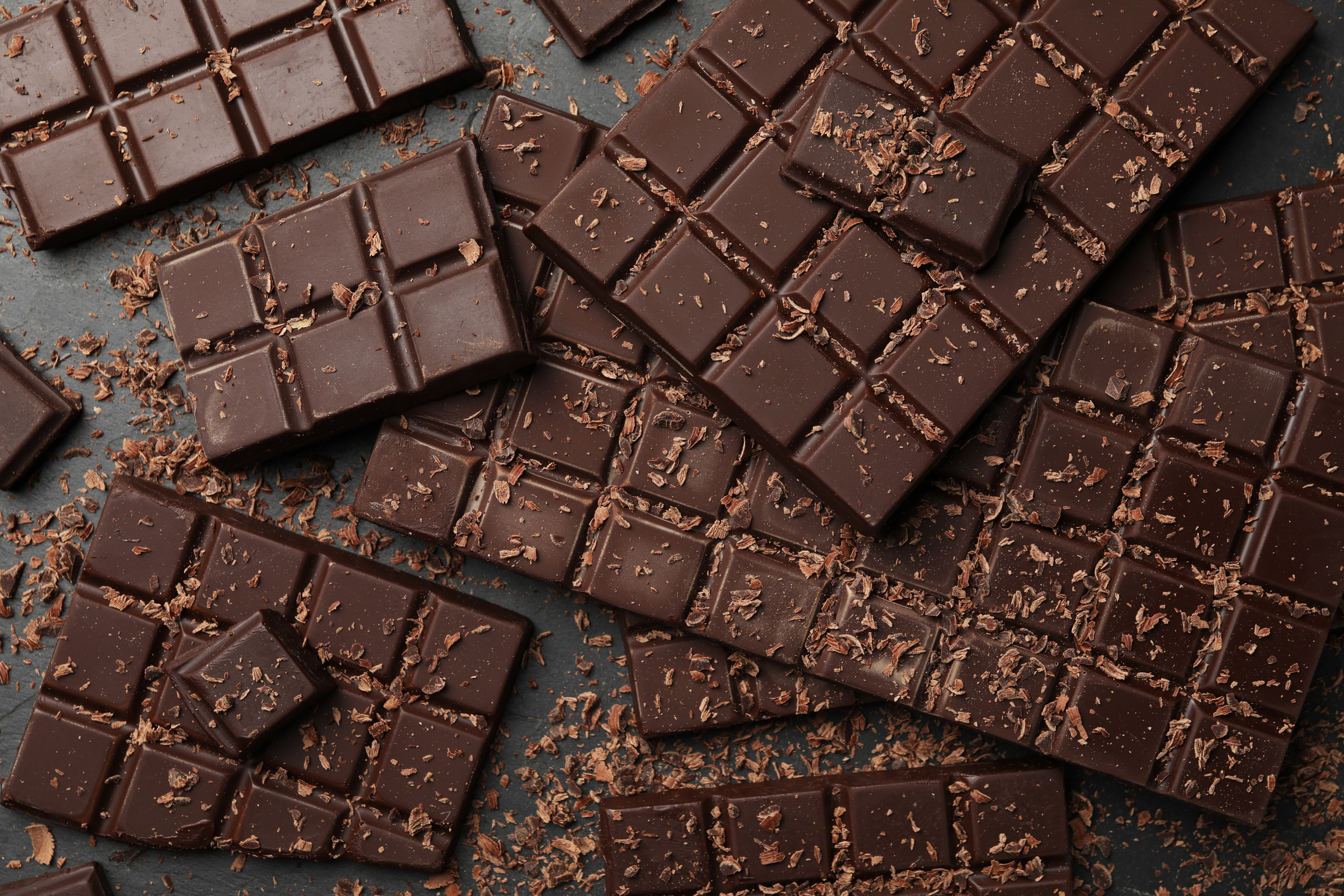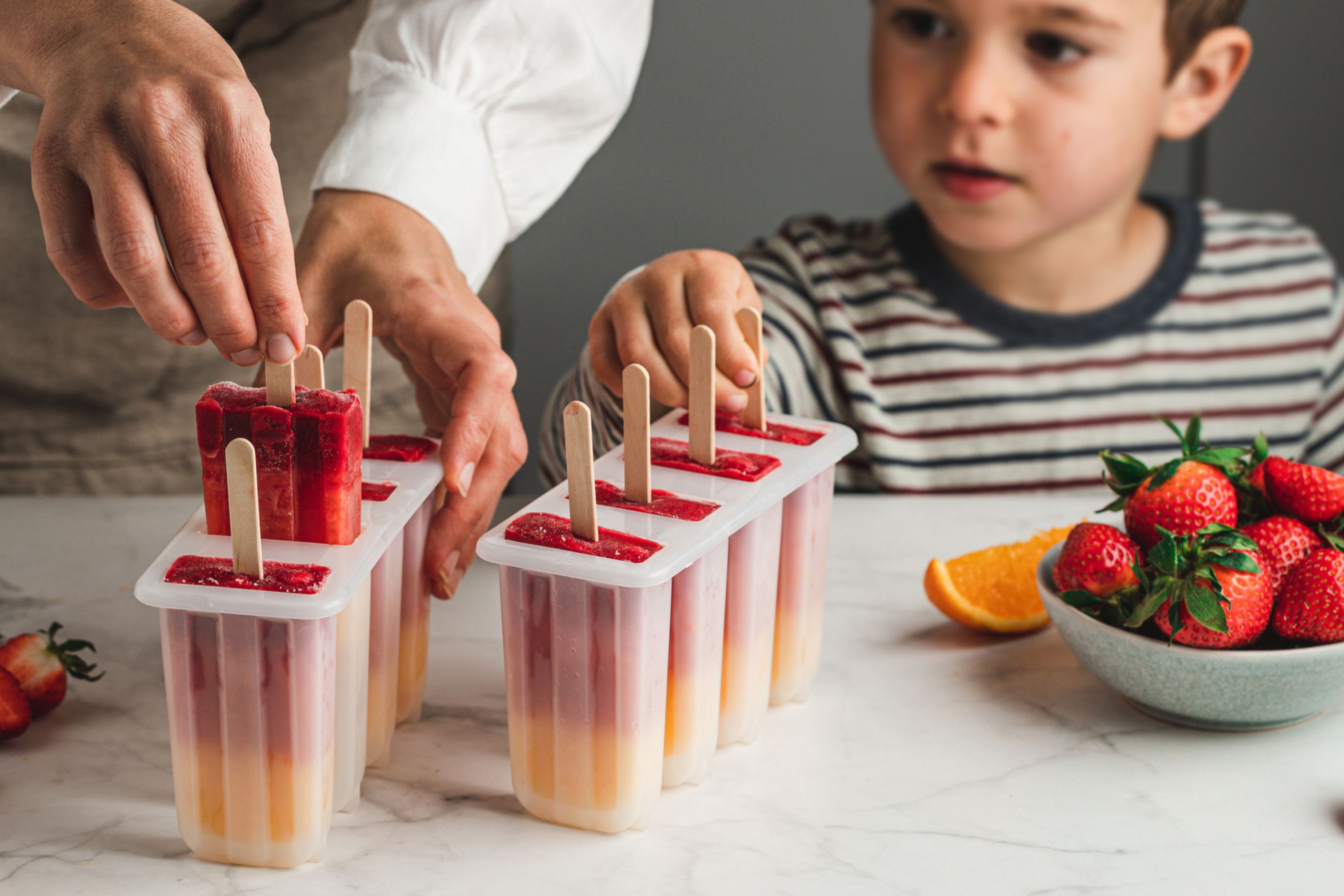
Whether it’s a chocolate bar, a pack of gummy bears, or an ice lolly after school, children love sweets and it can be hard to avoid them - especially when they dominate supermarket shelves. But how healthy are these shop-bought treats, and is there such a thing as a healthier alternative?
Gone are the days of simply counting calories and watching how much fat you consume when indulging in your favourite chocolate bar, nowadays it's all about whether the food is ultra-processed or not, or whether it's packed with hidden sugars, e-numbers and additives. But, what are ultra-processed foods and why do we need to be aware of them alongside sugar and fat?
Ultra-processed foods (UPFs) have been vigorously manipulated and changed during the production process altering or adding ingredients - for example, preservatives, colouring, and flavouring. Think biscuits, crisps, cereal, and ice cream to name a few. Ultra-processed foods often contain high levels of saturated fat, salt, and sugar which in turn have been said to have a range of negative effects on our bodies. And it's not just adults being impacted, ultra-processed foods negatively affect children too - causing both short-term and long-term issues.
According to gut health experts at ZOE, “the consensus is that ultra-processed food is unhealthy. Diets high in ultra-processed foods have been linked with increased risk of heart disease, weight gain, cancer, and even mortality - but why? Processing changes the complex structure of nutrients in a food, which scientists call the food matrix. Furthermore, research has shown that changes in the food matrix alter the way our bodies respond to food, potentially putting us at risk of these health conditions.”
The NHS recommends the maximum daily amounts of sugar for children as follows: 4-6-year-olds: 19g (5 cubes), 7-10-year-olds: 24g (6 cubes), and 11+-year-olds: 30g (7 cubes). It goes on to say; “Too much sugar is bad for children's health as it can lead to the build-up of harmful fat on the inside that we cannot see. This fat can cause weight gain and serious diseases like type 2 diabetes, heart disease, and some cancers.”
So with this in mind, how are we ever supposed to enjoy a sweet treat? Well, here at GoodtoKnow we’re all about encouraging a balanced diet, focusing on whole, natural, unprocessed foods first and then the processed and UPFs in minimal, limited quantities. Sweets ideally should be eaten in moderation as most are high in sugar, however, you could try swapping them for healthier sweet alternatives such as dark chocolate instead of milk, or homemade gummy sweets instead of the shop-bought kind. We’ve listed a few more inspiring ideas below to help you get started.
What we considered when choosing the healthiest sweets
When it comes to choosing which sweets are healthy or not it's all about how processed the sweets are and what nutritional content is included - ideally, you’re looking for low sugar, low saturated fats and high fibre. We opted for minimal processing and sugar, we favoured whole foods or unprocessed sweet alternatives and went for options you can easily make at home.
Healthiest way to enjoy sweets
Homemade healthy sweets
Did you know that you can make your own gummy sweets at home? A much healthier alternative to shop-bought packets of sweets - and cheaper too. All you need is a natural fruit juice, sweet mould, and gelatin. Using fruit juice instead of jelly cubes will ensure the sweets are more natural and wholesome. You could even add fresh fruit into the mix.
Making sweet treats from scratch is a great way to ensure you know exactly what goes into each treat and avoid unwanted ultra-processed nasties. Making jellied fruit sweets, cookies, cupcakes, or even desserts is better homemade than buying processed from the supermarket. Of course, as with everything that contains sugar, it's best to eat in moderation and keep in mind that these are healthier swaps, not entirely healthy as all contain sugar so don’t overindulge otherwise you won’t reap the benefits:

Fruit-based treats
When you’re in the mood for something sweet, fruit certainly wouldn’t go a miss. Various fruit-based treats on the market are perfect for that sweet fix if an apple isn’t cutting it for you. Bars made with dried fruits tend to have a range of nutritional benefits, including fibre content and natural sugars. Examples include some Organix bars, That’s It bars, and Nakd fruit bars. Here are some fruit bar comparisons:
The key takeaway is to choose fruit bars that have minimal ingredients, which should then suggest that the product has gone through minimal processing and should therefore be healthier. Even though fruit bars are healthier than jelly sweets, pick ‘n’ mix and all that jazz, they still need to be eaten in moderation as most contain a high amount of natural sugars.
Dried fruit is also a great variation of a fruit-based treat. You could try drying your own fruit at home with a fruit dehydrator, however, make sure you eat this in moderation as it still has high levels of sugar even if it is natural.
Dark chocolate
If you’re a fan of a chocolate bar try swapping it for dark chocolate instead, as dark chocolate is good for you. Scientists and experts at ZOE say: “Dark chocolate has several times more antioxidants than green tea or red wine. And it contains substances that may help lower your blood pressure, improve your cholesterol levels and brain function, and help your body deal with insulin. But some dark chocolate also has high levels of refined sugar and additives.”
Choose dark chocolate with a high cocoa content above 70% cocoa is recommended. “The percentage of cocoa in dark chocolate is important. The more cocoa chocolate contains, the darker it is, and the more health benefits it's likely to have. As the cocoa percentage increases, the chocolate is also less likely to contain other ingredients,” says the scientists and experts at ZOE. Here are some dark chocolate recommendations:
- Willie's Cacao Pure 100% Gold, 100% Sur del Lago Cacao
- Montezuma's Dark Chocolate Absolute Black 100% Cocoa
- M&S 100% Cocoa Peruvian Dark Chocolate
- Sainsbury's Madagascan 80% Dark Chocolate, Taste the Difference
- Green & Black's Organic 85% Dark Chocolate Bar
- Lindt Excellence Dark 90% Cocoa Chocolate Bar
GoodtoKnow editor Anna Bailey is a huge fan, “I used to love milky chocolate, but I made the switch to dark chocolate to improve my gut health. I started at 70% and worked my way up to 85%, which I now really enjoy. Even if it's darker chocolate, you still need to read the labels though - personally I avoid anything with emulsifiers, which can be found in some popular brands. Sainsbury's Madagascan 80% Dark Chocolate is my favourite. I also love that this counts towards my 30 plants a week, and is considered a fermented food.”

Nut and seed snacks
Sometimes the key to beating that sweet craving is to eat something that will fill you up and provide you with energy and nutrients that your body may be craving. Foods high in protein and fibre are a great choice and will ensure your sugar cravings are kept well and truly at bay, plus nuts and seeds have various health benefits too.
According to the Heart Foundation; “Nuts and seeds may be small, but they are packed with nutrients. They provide us with fibre, plant protein and healthy fats – which are all beneficial for heart health1,2. Each type of nut and seed contains different vitamins (like folate), minerals (like magnesium and calcium) and phytochemicals, which are needed by our bodies in very small amounts but provide protective effects against heart disease1,3-5. If you eat a range of nuts and seeds, you’re more likely to benefit from all the different nutrients they can provide.”
There are various nuts and seeds worth eating on their own, incorporating into your homemade snack bars, or looking out for when buying healthy cereal bars in the supermarket including the following types:
- Hazelnuts
- Cashews
- Macadamias
- Pistachios
- Walnuts
- Peanuts
- Pecans
- Almonds
- Brazil nuts
- Pine nuts
- Flaxseeds/linseeds
- Sesame seeds
- Sunflower seeds
- Poppy seeds
- Chia seeds
- Hemp seeds
- Pumpkin seeds
There are lots of cereal bars and healthy snack bars on the market nowadays that make a great sweet treat enjoyed in moderation and include an array of nuts and seeds listed above. However, keep in mind that these bars may be higher in fat, because of the natural fats in nuts. And you’ll want to avoid bars with long-listed ingredients, emulsifiers, or additives.
For the healthiest option, try making your own nut and seed bars or nut and seed flapjacks.
Yoghurt sweets
Brands such as Go Ahead, Eat Natural, and Alpen spring to mind when thinking of yogurt-covered sweet treats, however, most of these are not entirely healthy as they have added ingredients or preservatives to prolong shelf life.
Nowadays you can buy dried fruits covered in yogurt - be it apricots or raisins, which make a great confectionary alternative, but once again we’re met with the dreaded emulsifiers and additives.
If in doubt, you’re always best to buy a tub of natural or unsweetened Greek yogurt, and some fresh fruit, and get dipping. You could try dipped strawberries or raspberries in yogurt leaving them to set in the freezer for an added crunch. You could also blend fruit and yogurt and pour them into ice lolly moulds to make the perfect summer sweet treat.
There are various benefits of choosing yogurt as a sweet alternative. A report in Medical News Today states that: “Yogurts can be high in protein, calcium, vitamins, and live culture, or probiotics, which can enhance the gut microbiota.”

Tips for enjoying sweets in a healthy way
When it comes to eating sweets, it's all about moderation. Sweet treats can easily become a large part of our daily diet, however, it is recommended that we incorporate sweets into a balanced diet without overindulging. One of the easiest ways to do this is through portion control and the importance of reading labels to understand nutritional content.
According to the British Nutritional Foundation; “If a food or drink product has two or more ingredients, they must all be listed. These ingredients are listed in descending order of weight. This means the main ingredients in the packaged food will always be displayed first. This can help you to make healthier choices too, as if the first few ingredients in a food or drink product are ‘sugar’ or ‘butter’, you will know that they are the main ingredients, and is therefore a high-fat or high-sugar product.”
The key to spotting an ultra-processed food is in the ingredients. Often ingredients with five or more ingredients, ingredients you’ve never heard of before or couldn’t buy yourself in the supermarket, or ingredients with numbers and letters are UPFs and are best to be avoided.
Focusing on the importance of a balanced diet, making healthier homemade swaps, and reading and understanding food labels when you shop are all a great place to start when it comes to eating healthier.







